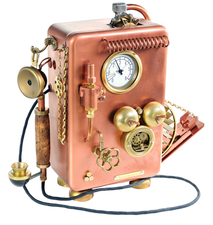Overview of the Serial Communication Protocol
In Series

© Lead Image © 3355m, 123RF.com
We explore serial communications, from the electrical specs to protocols and libraries, with an example of serial communication with an Arduino.
The word "serial" in terms of computers might bring several things to mind. In modern times, it might be the universal serial bus (USB). Not too long ago, it might have brought to mind a 9-pin connector on the back of your desktop – or the even bigger 25-pin connector a bit before that. Different, still, the term might bring up memories of modems, printers, or peripherals connected to specialty computers. If you look at early mainframes, the serial port was the main interface to a text terminal and thus the human interface to the computer.
Some of these usages have been superseded by newer or different technologies, but serial is still alive and well. Although not as common on today's computer equipment, serial communication is far from gone, and its availability can provide some interesting possibilities for talking to unique hardware.
Basic Principles
In the simplest sense, an electric circuit used for communication just uses a completed circuit to represent a 1 and a broken circuit to represent a 0. See the "Telegraphy" sidebar for how this worked in real life for years. The limitation of a simple telegraphy circuit is that for each signal you want to send, you need a dedicated wire.
[...]
